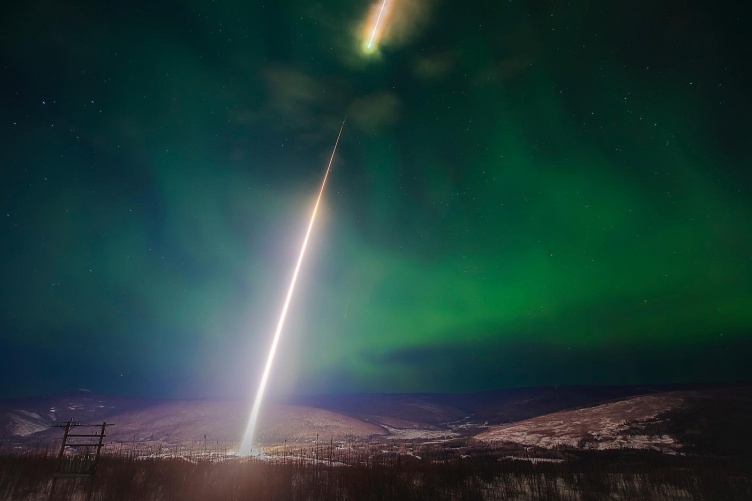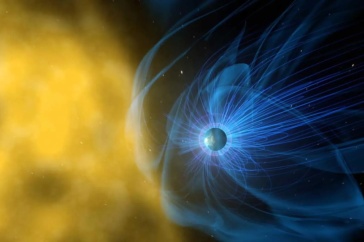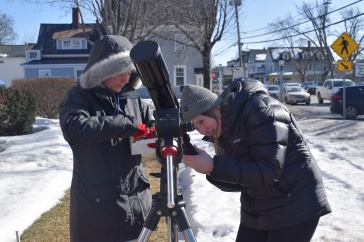
One recent night on the frozen tundra of interior Alaska, beneath the glowing green flickers of the Northern Lights, a rocket blasted into the lower atmosphere, carrying with it instruments built by UNH researchers and students to study one specific type of aurora and how it forms.
The mission — Loss through Auroral Microburst Pulsations, or LAMP — is NASA’s latest endeavor to study pulsating aurora, the most widespread and persistent type of aurora. In general, researchers know that charged particles collide with gases like oxygen and nitrogen in the Earth’s atmosphere to create auroras, the colorful displays of light close to the North and South Poles. Pulsating auroras are more mysterious and often difficult to see with the naked eye. They are lower in the Earth’s atmosphere and stretch far across the sky, “like big, dim pancakes,” says Marc Lessard, UNH professor of physics who is a collaborator on LAMP, which is led by NASA’s Goddard Space Flight Center. Lessard is part of UNH's Space Science Center and the College of Engineering and Physical Sciences.

Dominic Puopolo '19 stands in front of the rocket while it's hooked up to the launch rail.
The LAMP mission is addressing a fundamental question: How and to what extent are pulsating auroras driven by particles from Earth’s radiation belts? While pulsating auroras occur at the upper regions of our atmosphere, the radiation belts exist in a region of space that is much further away, near our magnetic equator, a region that is flooded with charged particles during large solar storms. Lessard and others on the LAMP mission want to determine what role electron microbursts play in creating the pulsating auroras. According to Lessard, “the mission is quite unique in that it is expected to provide solid evidence of coupling between Earth’s radiation belts and pulsating aurora.”
As the rocket blasted to 450 km altitude, it looked down from above the pulsating aurora to record data; the UNH instruments were specifically focused on measuring the temperature of the electrons in the aurora and the magnetic field variations. The rocket was only up for a short amount of time — less than 10 minutes — but it sent back a huge amount of data that Lessard and other scientists are now poring through.
A third piece of UNH-built equipment aboard the rocket, called the De-Spun Platform, provided a place for scientists to affix a downward-pointing camera and stabilize it; while the rocket spun in one direction, the De-Spun Platform rotated in the opposite direction, thus providing a view that appeared fixed. Dominic Puopolo ’19, currently a research project engineer who works in Lessard’s lab, was in charge of taking an earlier version of the platform design — one that didn’t work properly — and turning it into a successful solution for the LAMP mission launch. He began the work while he was still an undergrad studying mechanical engineering and he stayed on after graduation to continue this and other projects related to rocket research.
Puopolo, who spent part of his youth in Rochester, New Hampshire, notes that he feels lucky to have had the opportunity to get involved in rocket research so early in his career. “This was an invaluable experience to be involved in as a student — leaps and bounds beyond what many others experience before graduating college,” he says. “And the longer I stay involved in this work, the more I want to stick around. It just keeps getting more and more exciting.”
-
Written By:
Rebecca Irelan | Institute for the Study of Earth, Oceans, and Space | rebecca.irelan@unh.edu | 603-862-0990

















































